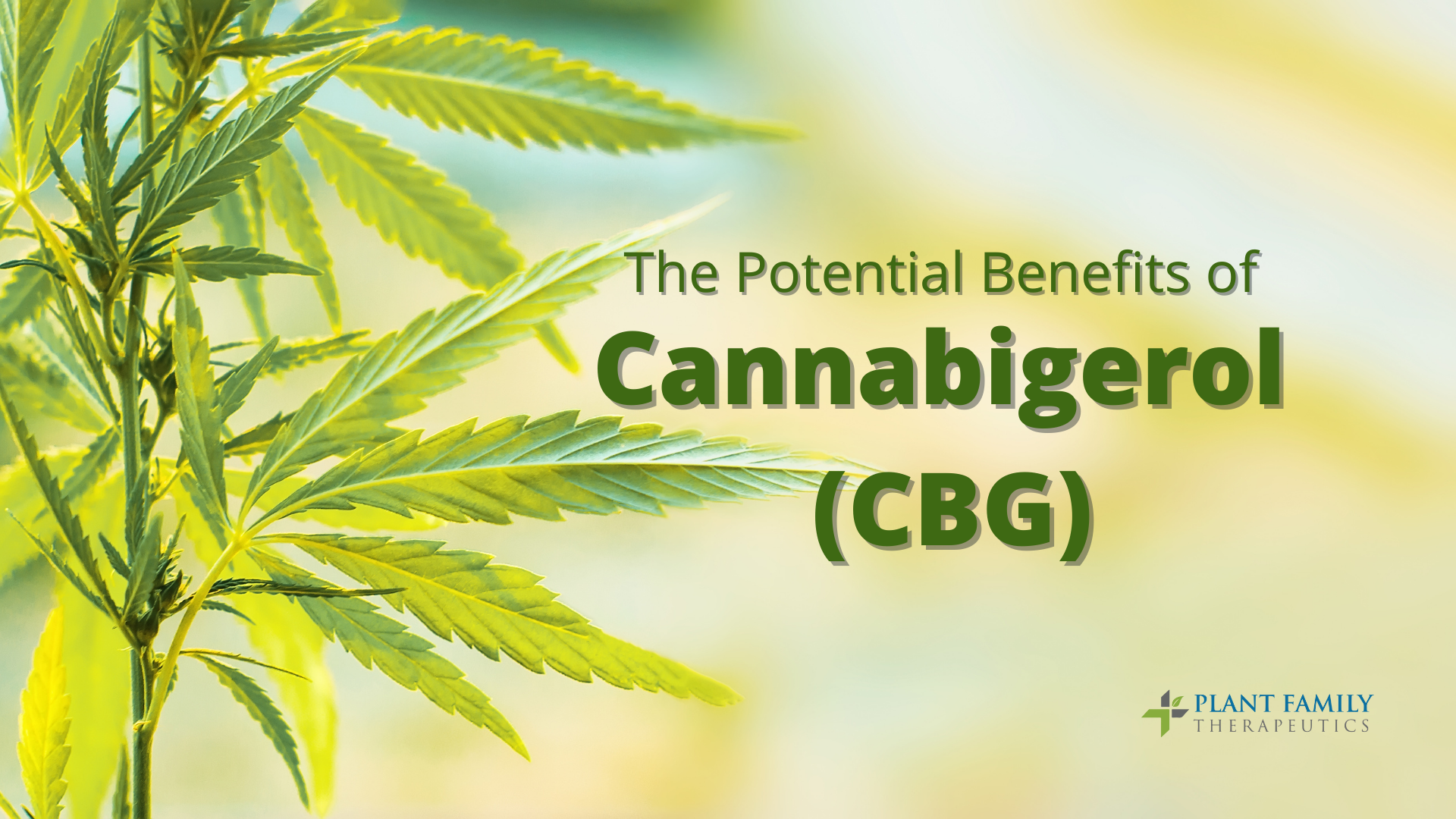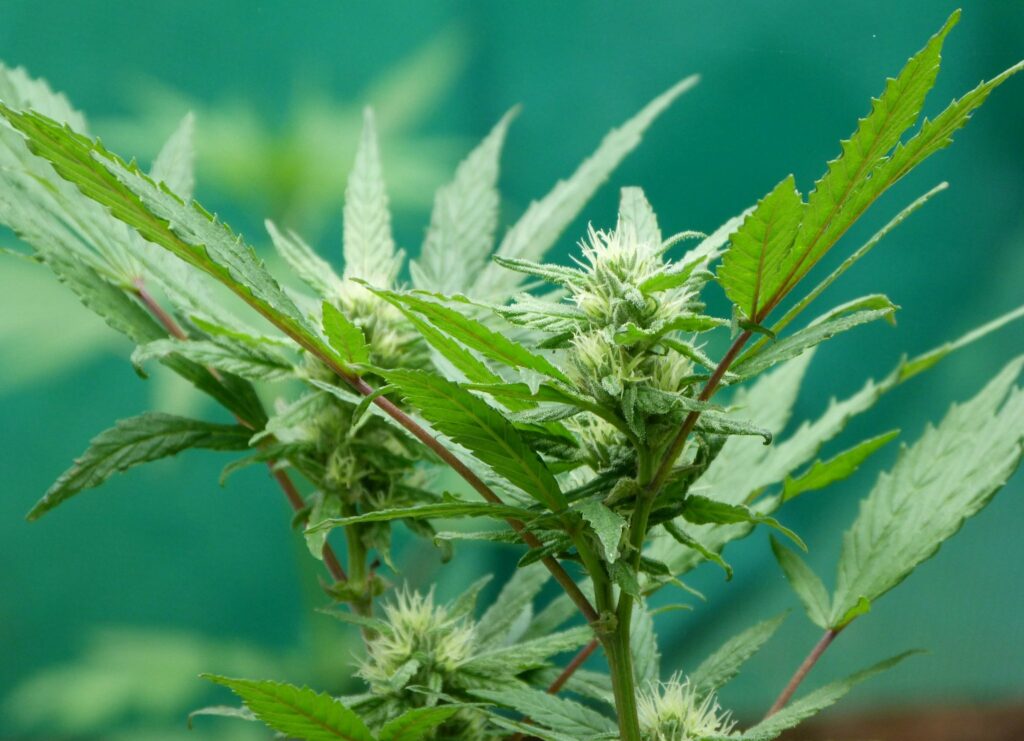This website requires you to be 21 years or older to enter. Please confirm your age below to continue.

Cannabigerol (CBG) is a lesser-known cannabinoid and the precursor or mother to all other cannabinoids, like THC and CBD. CBG is often compared to CBD due to the similar effects, but as it turns out, CBG may be more powerful than CBD.
Millions of people in the U.S. are currently using cannabis to heal ailments and to boost their mood. THC’s euphoric effects have been given credit for the uplifting results, when in fact, the feel-good sensation may be from CBG instead. As scientists isolate and test CBG, it is becoming clear that this molecule can support boosts in euphoria, mood, and positive feelings.
First discovered in 1964, this non-intoxicating cannabinoid is seeing an increase of attention from researchers, producers, and consumers. CBG may be considered a minor cannabinoid when it comes to the percentage it makes up in cannabis plants, but it plays a very important role in the development of the other cannabinoids. As mentioned above, CBG is the precursor to the other cannabinoids, and this is a great example of how no one cannabinoid is more important than the others, no matter their levels.
Therapeutic Potential
Like CBD, another feel-good cannabinoid, CBG can dampen down the troublesome effects from consuming too much THC, like anxiety and paranoia. CBG and CBD also interact with the same receptors in the body and have anti-inflammatory effects. CBG has been shown to be more powerful than THC when it comes to inhibiting the enzymes that produce inflammation.

Because CBG makes up less than 1% in many strains it is considered one of the minor cannabinoids and since it is the precursor to THC and CBD, research has been limited, but studies do exist.
The following conditions may be improved with CBG:
While these results are promising, CBG research is in its early stages. Human research is lacking, and conclusive evidence is not yet available. One thing is for sure, CBG is sure to keep researchers busy for some time as they unravel its mysteries and continue to test its therapeutic use.
References
Borrelli, F., Pagano, E., Romano, B., Panzera, S., Maiello, F., Coppola, D., De Petrocellis, L., Buono, L., Orlando, P., & Izzo, A. A. (2014). Colon carcinogenesis is inhibited by the TRPM8 antagonist cannabigerol, a Cannabis-derived non-psychotropic cannabinoid. Carcinogenesis, 35(12), 2787–2797. https://doi.org/10.1093/carcin/bgu205
Brierley, D. I., Harman, J. R., Giallourou, N., Leishman, E., Roashan, A. E., Mellows, B., Bradshaw, H. B., Swann, J. R., Patel, K., Whalley, B. J., & Williams, C. M. (2019). Chemotherapy-induced cachexia dysregulates hypothalamic and systemic lipoamines and is attenuated by cannabigerol. Journal of cachexia, sarcopenia and muscle, 10(4), 844–859. https://doi.org/10.1002/jcsm.12426
Brierley, D. I., Samuels, J., Duncan, M., Whalley, B. J., & Williams, C. M. (2016). Cannabigerol is a novel, well-tolerated appetite stimulant in pre-satiated rats. Psychopharmacology, 233(19-20), 3603–3613. https://doi.org/10.1007/s00213-016-4397-4
Cascio, M. G., Gauson, L. A., Stevenson, L. A., Ross, R. A., & Pertwee, R. G. (2010). Evidence that the plant cannabinoid cannabigerol is a highly potent alpha2-adrenoceptor agonist and moderately potent 5HT1A receptor antagonist. British journal of pharmacology, 159(1), 129–141. https://doi.org/10.1111/j.1476-5381.2009.00515.x
Gugliandolo, A., Pollastro, F., Grassi, G., Bramanti, P., & Mazzon, E. (2018). In Vitro Model of Neuroinflammation: Efficacy of Cannabigerol, a Non-Psychoactive Cannabinoid. International journal of molecular sciences, 19(7), 1992. https://doi.org/10.3390/ijms19071992
Lah, T. T., Novak, M., Pena Almidon, M. A., Marinelli, O., Žvar Baškovič, B., Majc, B., Mlinar, M., Bošnjak, R., Breznik, B., Zomer, R., & Nabissi, M. (2021). Cannabigerol Is a Potential Therapeutic Agent in a Novel Combined Therapy for Glioblastoma. Cells, 10(2), 340. https://doi.org/10.3390/cells10020340
Nadolska, K., & Goś, R. (2008). Mozliwości zastosowania kannabinoidów w leczeniu jaskry [Possibilities of applying cannabinoids’ in the treatment of glaucoma]. Klinika oczna, 110(7-9), 314–317. https://pubmed.ncbi.nlm.nih.gov/19112869/
Nallathambi, R., Mazuz, M., Namdar, D., Shik, M., Namintzer, D., Vinayaka, A. C., Ion, A., Faigenboim, A., Nasser, A., Laish, I., Konikoff, F. M., & Koltai, H. (2018). Identification of Synergistic Interaction Between Cannabis-Derived Compounds for Cytotoxic Activity in Colorectal Cancer Cell Lines and Colon Polyps That Induces Apoptosis-Related Cell Death and Distinct Gene Expression. Cannabis and cannabinoid research, 3(1), 120–135. https://doi.org/10.1089/can.2018.0010
Pagano, E., Montanaro, V., Di Girolamo, A., Pistone, A., Altieri, V., Zjawiony, J. K., Izzo, A. A., & Capasso, R. (2015). Effect of Non-psychotropic Plant-derived Cannabinoids on Bladder Contractility: Focus on Cannabigerol. Natural product communications, 10(6), 1009–1012. https://pubmed.ncbi.nlm.nih.gov/26197538/
Stacey J. Sukoff Rizzo, Claudine Pulicicchio, Jessica E. Malberg, Terrance H. Andree, Gary P. Stack, Zoë A. Hughes, Lee E. Schechter, Sharon Rosenzweig-Lipson, (2009). 5-HT1A receptor antagonism reverses and prevents fluoxetine-induced sexual dysfunction in rats, International Journal of Neuropsychopharmacology, Volume 12, Issue 8, September 2009, Pages 1045–1053, https://doi.org/10.1017/S1461145709000406